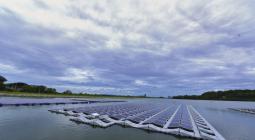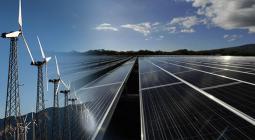South Korea has added 1.64 GW of solar so far this year.

This new development has brought the country’s cumulative installed solar capacity to more than 9.5 GW. Around 91.5% of the newly installed capacity is represented by PV systems below 1 MW in size.
South Korea’s Ministry of Trade, Industry and Energy (MOTIE) announced in a press release this week that the country’s newly installed PV capacity for the first seven months of this year has reached approximately 1.64 GW.
For comparison, in 2018 – South Korea’s best year in terms of new PV deployments – new capacity reached 2.02 GW. This means that, if the current trend continues throughout the remaining part of 2019, the country will post another record. By the end of July, the nation’s cumulative installed solar capacity had reached approximately 9.5 GW.
In 2017 and 2016, new PV additions reached 1.3 GW and 889 MW, respectively.
The MOTIE also noted that new capacity has already exceeded the government’s 1,632 MW target for 2019. Of the total thus far, around 92.1%, or about 1.5 GW, has come from PV installations below 1 MW in size. The provinces of Jeonbuk, Jeonnam and Chungnam have the largest share of this new capacity, with 17%, 18.3% and 14.0% of the total, respectively.
Domestic panels
The MOTIE also stressed that the quality of solar modules has improved considerably. “In 2018, the share of photovoltaic modules with efficiency of more than 18% accounted for only about 35%, but this year their share increased to more than 80%,” it stated, while also noting how panels made in South Korea accounted for 69% of domestic installations.
South Korea currently plans to install 30.8 GW of solar by 2030. This ambitious target is expected to be achieved by building giant solar parks, such as a recently announced 2.1 GW floating solar project and a 3 GW ground-mounted PV array that was announced for the Saemangeum area by South Korean President Moon Jae-in in November.
In order to support the domestic solar industry, the South Korean government is also considering the introduction of a new regulation to prioritize PV projects with low carbon footprints and high-efficiency modules.
9 August 2019
pv magazine




